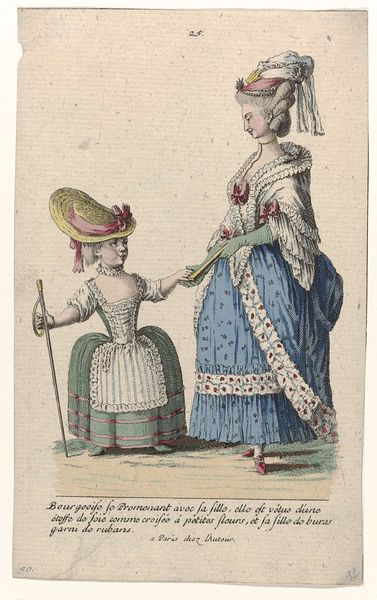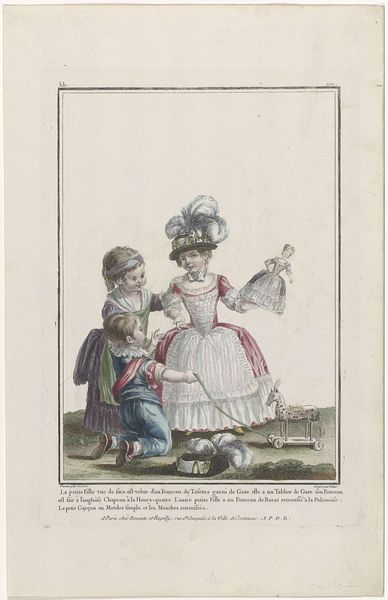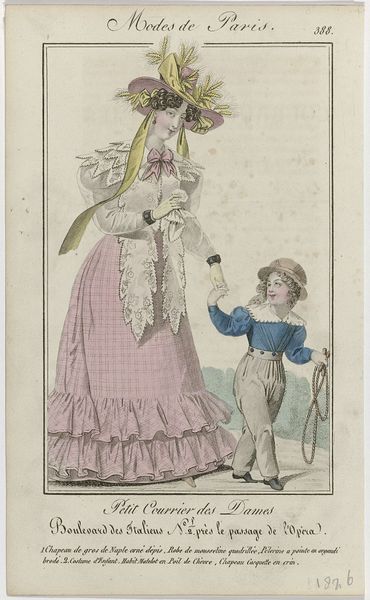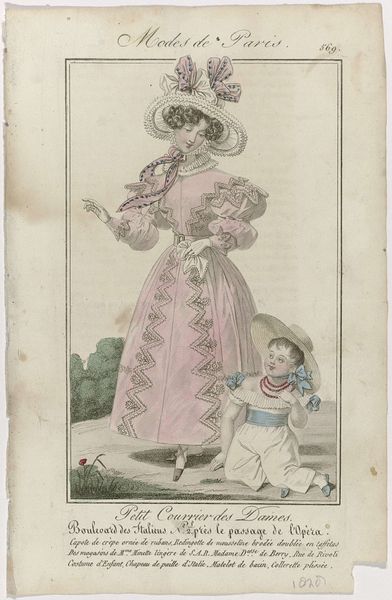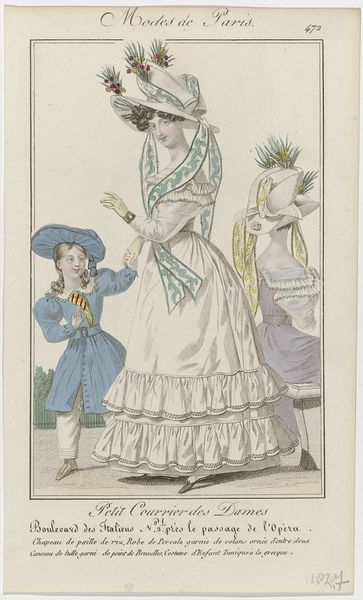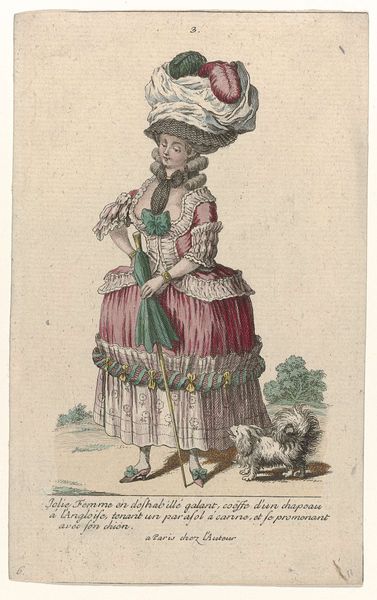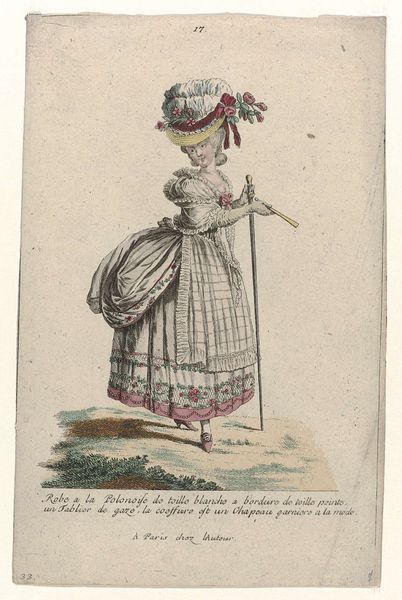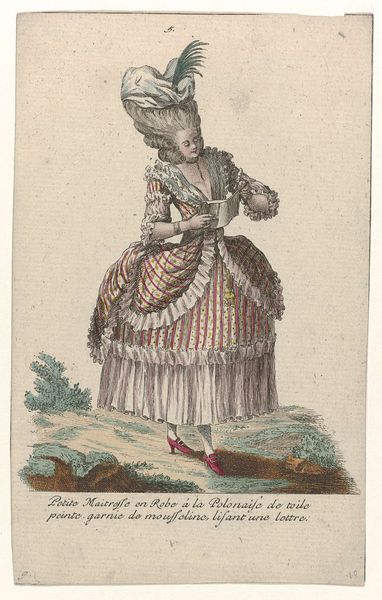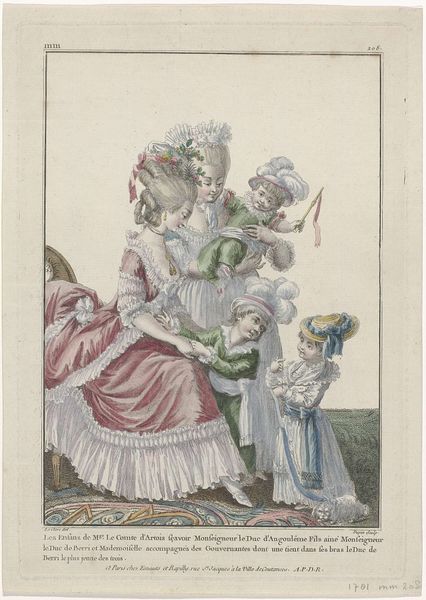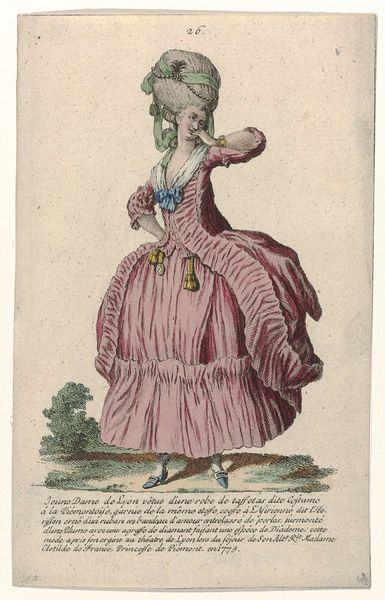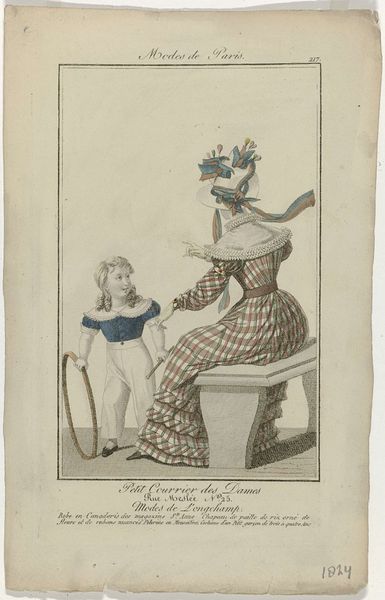
Gallerie des Modes et Costumes Français, 1785, nr. 29, nr. 57, Kopie naar jj 198 : Jeune Dame en robe à la Polonnois (...) c. 1785
0:00
0:00
Dimensions: height 178 mm, width 110 mm
Copyright: Rijks Museum: Open Domain
Curator: This coloured pencil print, dating back to around 1785, is titled "Gallerie des Modes et Costumes Fran\u00e7ais, 1785, nr. 29, nr. 57, Kopie naar jj 198 : Jeune Dame en robe \u00e0 la Polonnois (...)." The work reflects Rococo style. Editor: Immediately, I notice the overwhelming height of her wig – quite a feat of construction and engineering using horsehair, padding, and who knows what else to defy gravity like that. It speaks volumes about the priorities of the upper classes. Curator: It really does. And about the politics surrounding adornment in the late 18th century. These 'Gallerie des Modes' prints played a crucial role in disseminating those ideals. They provided examples for elite women—the intended consumer base for increasingly global trade goods. These images constructed ideals of womanhood tied directly to consumption. Editor: Note how the figure is constructed. The paper support and coloured pencil are part of a deliberate art of illusion making that mirrors fashion itself. This image isn't only about representing but also, in some ways, *producing* desire. The clothing, after all, exists through dye technologies and sewing practices of laborers to meet the demands of an elite consumer. Curator: Precisely. We must not lose sight of those complicated social and political implications, especially regarding wealth and gender during the French Revolution, while taking in a print such as this one. The "robe \u00e0 la Polonaise" dress references a kind of invented pastoral ideal, associating aristocratic women with a simplified vision of rural life, a stark contrast to realities. Editor: Indeed. It makes you wonder how many hours went into producing just one of those elaborate wigs, how many people were involved in cultivating, manufacturing, and trading the textiles. And beyond, of course, where all of the financial profits flowed from these industries of artifice. Curator: Thinking about the woman leading the child by the hand and its relation to genre painting. Even their walk carries certain significance of the work. By examining prints like these we get glimpse in gendered ideas about the responsibilities placed on people with holding elevated status and societal values during pre-revolutionary France Editor: Absolutely. Examining art like this helps connect us more concretely to material history—the networks of resources and labour and wealth that intersect within what appears on the surface to be simply a picture of refined beauty and elevated privilege.
Comments
No comments
Be the first to comment and join the conversation on the ultimate creative platform.
